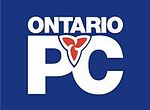


Archived Seat Projections
- Little Change Following Debate
2011-10-03 - New Survey Confirms Dead Heat
2011-09-1426 - Liberals Slip but Still in Minority Government Range
2011-09-20 - New Polls Confirm Liberal Lead
2011-09-14 - Conservative Lead Erodes
2011-09-09 - Ontario Conservatives Just Shy of Majority Numbers
2011-09-02 - Ontario Liberal Campaign Picking Up Steam
2011-08-18 - Conservatives Making Gains in Ontario Election
2011-07-19 - Conservatives in the Lead for Ontario Election
2011-06-20
Ontario Conservatives Just Shy of Majority Numbers
The accompanying seat projection was based upon a blended and weighted sample of 3300 respondents conducted by Forum Research and Angus Reid during the last few days of August. The most evident trend since the previous LISPOP projection earlier in the month, was an almost 5% increase in voter support for the NDP. It is quite possible that this was influenced by the emotional response to the death and funeral of federal NDP leader Jack Layton. The net change came from both Liberals and Conservatives, such that the Conservative popular vote lead of 5.5% leaves Tim Hudak's party basically where it was before, just short of majority government territory.
Projected distribution of seats by party, released September 2, 2011
2011 Projection |
2007 Results |
2007 Projection |
|
 |
52 |
26 |
29 |
 |
37 |
71 |
68 |
18 |
10 |
10 |
Note:
The "regional swing model" is more fully explained in a paper originally prepared and presented by Dr. Barry Kay to the 1990 annual meeting of the Canadian Political Science Association, entitled "Improving Upon the Cube Law: A Regional Swing Model for Converting Canadian Popular Vote into Parliamentary Seats". It should be noted that the application of the model above does not make use of the "incumbency effect" described in that paper. In tests for past elections, using late campaign polls to project electoral outcomes, the model has proved to be accurate within an average of four seats per party since 1963. Readers interested in post-dictions for past federal elections dating back to 1963, for projections using pre-election polls dating back to the 1980 federal election and for three Ontario provincial elections, may contact me at bkay@wlu.ca.